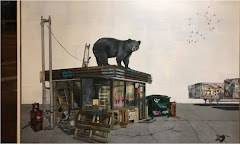I went to see a couple of comic book movies this week. Not because I really wanted to. But because it’s Summer and there’s not much else playing.
And I really enjoyed one of them. Not because the film was any good. But because I was in the company of someone who couldn’t see it.
I have a friend who is blind and every now and then asks me to take her to a movie. I joke that it’s easier go with me than clean the sticky floor residue off her guide dog afterward. But the truth is, seeing a movie with someone who is blind gives me an insight into it that I wouldn’t be able to find on my own.
Sit-com icon Gary Marshall once told me that the best way to learn to write sitcoms was not to watch a lot of them but to listen to them instead.
Whatever visual humor you might miss by keeping your eyes off the screen is more than compensated by what you learn about timing and joke construction.
Sometimes I think the same exercise in sensory limitation can teach you a lot about what makes a movie.
Screenwriters are repeatedly told, to their great dissatisfaction, that audiences only retain about 5% of the story information delivered via dialogue. Instead, audiences follow the story by way of the visuals, the musical cues and soundscape.
That should imply that anyone unable to see the visuals would lean more on what’s said and be more connected to the script, right?
Wrong.
My friend has her film experience enhanced by using a set of headphones connected to what’s called an audio description service. This provides a description of what’s going on embedded between dialogue and significant sound effects.
Yet even with this minimal intrusion, the blind seem able to follow even the most complicated action sequences.
Something theatres might think of providing for all of us at the next Michael Bay film.
But what I was also reminded of at this week’s screening was how much of a film’s soundscape reaches us subliminally while we’re being overwhelmed with CGI visuals and how much story telling is conveyed or enhanced by almost unheard moments of music.
But there was something else too. An awareness of how communal the movie experience is, how much we are influenced in our appreciation by the reactions of those around us.
I know that’s all basic stuff for those of us in the industry. But given how much our personal and social interactions are being replaced by the solitary experience that comes from using a smart phone, tablet or computer for so many things we do –- it’s good to be reminded that film and television are collaborative arts. A collaboration that includes the involvement of every member of the audience whatever their personal limitations.
Enjoy Your Sunday.




No comments:
Post a Comment